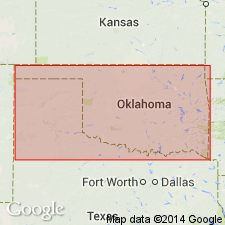
- Usage in publication:
-
- Quartermaster division
- Modifications:
-
- Original reference
- Dominant lithology:
-
- Sandstone
- Clay
- Shale
- AAPG geologic province:
-
- Anadarko basin
Summary:
Pg. 42, 57. Quartermaster division. Soft red sandstones and arenaceous clays and shales, 300 or more feet thick. Overlies Greer division, which consists of red clays, shale, and sandstones, and includes several gypsum beds, named, in descending order, Delphi, Collingsworth, Cedartop, Haystack, Kiser, and Chaney. Underlies Tertiary or later deposits. [Age is Permian.]
[Named from exposure along banks of Quartermaster Creek, Roger Mills Co., OK.]
Source: US geologic names lexicon (USGS Bull. 896, p. 1752-1753).
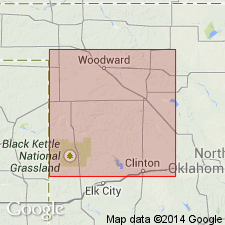
- Usage in publication:
-
- Quartermaster formation
- Modifications:
-
- Areal extent
Snider, L.C., 1913, The gypsum and salt of Oklahoma: Oklahoma Geological Survey Bulletin, 214 p.
Summary:
Quartermaster formation. 300 feet thick, contains no important gypsum deposits in Oklahoma. The underlying Greer formation is 150 to 300 feet thick, and overlies Day Creek dolomite member of Woodward formation.
Source: US geologic names lexicon (USGS Bull. 896, p. 1752-1753).
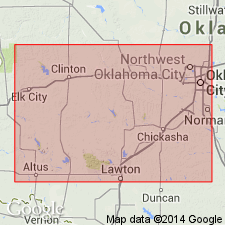
- Usage in publication:
-
- Quatermaster formation
- Modifications:
-
- Revised
Summary:
Pg. 312-320. Quartermaster formation overlies Cyril gypsum, which Gould referred to as "eastern area of Greer." The Cyril overlies Day Creek dolomite. [These formations were mapped in order here stated.]
[GNC remark (ca. 1938, US geologic names lexicon, USGS Bull. 896, p. 1753). In 1924 Gould introduced Cloud Chief gypsum for the rocks underlying Quartermaster formation that were formerly known as "eastern area of Greer division." (See under Cloud Chief gypsum.)]
Source: US geologic names lexicon (USGS Bull. 896, p. 1752-1753).

- Usage in publication:
-
- Quartermaster formation
- Modifications:
-
- Overview
Summary:
The downward stratigraphic succession of Quartermaster formation, Cloud Chief gypsum, Day Creek dolomite, and Whitehorse sandstone was given in reports by C.N. Gould, 1924; C.N. Gould and F.E. Lewis, 1926; C.N. Gould, 1926; R.L. Clifton, 1926; F. Gouin, 1927; C.N. Gould, 1927; N. Evans, 1927; N. Evans, 1928; A.M. Lloyd and W.C. Thompson, 1929; G.G. Suffel, 1930; A.F. Freie, 1930; R.L. Clifton, 1930; and R.L. Six, 1930. The 1926 report of Gould and Lewis suggested that "it might be well to consider the Day Creek dolomite the basal part of Cloud Chief gypsum." In 1930 (Oklahoma Geol. Survey Bull., no. 40,I) C.M. Becker stated that "Day Creek dolomite and Cloud Chief gypsunm are thought by some to occupy the same stratigraphic position." The 1928 report of N. Evans (AAPG Bull., v. 12, p. 708) identified in Weatherford area, Oklahoma, 5+/- feet of dolomite lying between Quartermaster formation above and Cloud Chief gypsum below as Quartermaster dolomite, and showed Cloud Chief gypsum ("massive pinkish-white gypsum") as separated from underlying Day Creek dolomite by 20 to 60 feet of red to buff sandstone with gypsum lentils, which he stated "is apparently Whitehorse." The 1930 report of G.G. Suffel (Oklahoma Geol. Survey Bull., no. 49) stated that in some places Day Creek dolomite appeared to be below top of Whitehorse sandstone.
Source: US geologic names lexicon (USGS Bull. 896, p. 1752-1753).
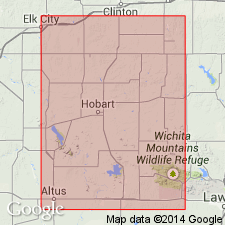
- Usage in publication:
-
- Quartermaster dolomite
- Modifications:
-
- Areal extent
- AAPG geologic province:
-
- Anadarko basin
- South Oklahoma folded belt
Summary:
The term "Day Creek dolomite" of Cragin has been applied to Weatherford dolomite, Greenfield dolomite, and Quartermaster dolomite. It is believed its continued use will only serve to confuse. Writer does not know what bed, if any, in southwest Oklahoma, corresponds to Day creek dolomite of Kansas. Age is Permian.
Source: US geologic names lexicon (USGS Bull. 896, p. 1752-1753).
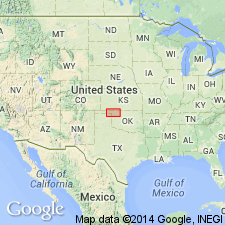
- Usage in publication:
-
- Quartermaster formation
- Modifications:
-
- Revised
- AAPG geologic province:
-
- Anadarko basin
Summary:
Pg. 161-172. Cloud Chief [formation] as originally defined by Gould includes beds from top of Day Creek up to base of Quartermaster formation. Evidences in field suggest Cloud Chief is not a geologic unit, but that it represents a group of more or less continuous stratigraphic units. Writer believes Cloud Chief as a formation name should be dropped and that another formation name should be adopted to include the beds from base of Day Creek dolomite up to base of Quartermaster, and there is some evidence to suggest that even the Quartermaster might well be included in this suggested revision. At any rate a new formation to include Day Creek dolomite, Hackberry shale, Big Basin sandstone, and the Permian beds overlying the Big Basin, up to base of Quartermaster, seems necessary if geologic designation is to be more strictly applicable to northwestern Oklahoma and adjacent areas.
Source: US geologic names lexicon (USGS Bull. 896, p. 1752-1753).
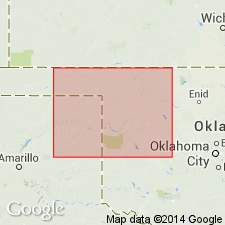
- Usage in publication:
-
- Quartermaster formation
- Modifications:
-
- Not used
- AAPG geologic province:
-
- Anadarko basin
Summary:
Pg. 434-437. Does not regard Evan's interpretation of stratigraphic relations of various formations as proved.
Source: US geologic names lexicon (USGS Bull. 896, p. 1752-1753).
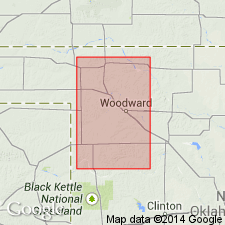
- Usage in publication:
-
- Quartermaster formation
- Modifications:
-
- Revised
- AAPG geologic province:
-
- Anadarko basin
Summary:
Pg. 405-432. Day Creek dolomite overlies Cloud Chief gypsum, instead of underlying it, as previously believed, and all Permian beds above Day Creek dolomite in Oklahoma and Kansas belong to Quartermaster formation. The Kansas terms "Hackberry" and "Big Basin" should be dropped. Writer has not anywhere seen beds of gypsum in Quartermaster formation. The Quartermaster rests conformably on Day Creek dolomite. The Cloud Chief is here made a member of Whitehorse formation.
Source: US geologic names lexicon (USGS Bull. 896, p. 1752-1753).
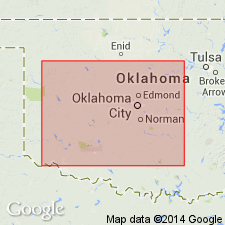
- Usage in publication:
-
- Quartermaster formation
- Modifications:
-
- Revised
- AAPG geologic province:
-
- Anadarko basin
Summary:
Pg. 1454, 1458, 1473. Divided Quartermaster formation of central and western Oklahoma into (descending): (1) Elk City sandstone member, (2) Doxey shale member, and (3) Cloud Chief member (consisting of sandstone, gypsum, and dolomite facies); and defined it as unconformably overlying Rush Spring formation.
Source: US geologic names lexicon (USGS Bull. 896, p. 1752-1753).
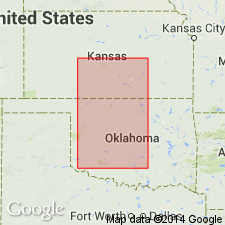
- Usage in publication:
-
- Quartermaster group
- Modifications:
-
- Revised
Summary:
Pg. 1526 (fig. 3), 1527-1528. Quartermaster used as group term to include Doxey shale and Elk City sandstone. Cloud Chief removed from Quartermaster and considered uppermost formation in underlying Whitehorse group.
Source: US geologic names lexicon (USGS Bull. 1200, p. 3171).
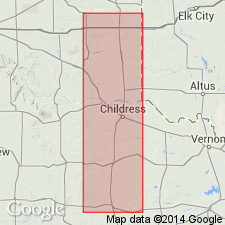
- Usage in publication:
-
- [Quartermaster formation]
- Modifications:
-
- Overview
Summary:
Pg. 421-433. Mentioned in general discussion of extension into Texas and loose use of Kansas and Oklahoma formation names in Texas.
Source: US geologic names lexicon (USGS Bull. 1200, p. 3170-3171).
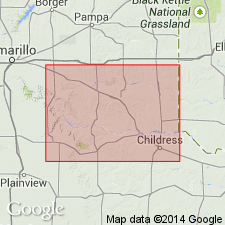
- Usage in publication:
-
- Quatermaster formation
- Modifications:
-
- Biostratigraphic dating
Summary:
Pg. 312-317. Age of Quartermaster formation of Oklahoma and Texas has been subject of controversy, being variously given as late Permian or Triassic(?). Fossils have been discovered in lower part of Doxey shale at base of Quartermaster. Some of the species recognized also characterize recently described Whitehorse fauna and indicate close relationship of enclosing beds with Whitehorse formation. If Whitehorse is Guadalupian (late Permian) in age, then fossiliferous Quartermaster beds probably are to be correlated with some part of Guadalupian or perhaps Ochoa of western Texas. Table shows Quartermaster formation as uppermost unit of Custer group.
Source: US geologic names lexicon (USGS Bull. 1200, p. 3171).
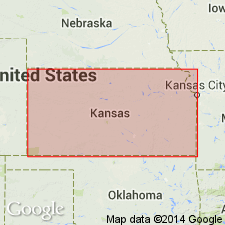
- Usage in publication:
-
- Quartermaster group
- Modifications:
-
- Revised
Summary:
Pg. 156-157. Permian beds above Day Creek dolomite are classified as belonging to Quartermaster group. They seem to be equivalent to lower part of Quartermaster formation of western Oklahoma and Panhandle of Texas. Maximum outcrop thickness in Kansas about 45 feet. Includes Taloga formation.
Source: US geologic names lexicon (USGS Bull. 1200, p. 3171).
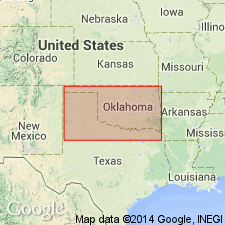
- Usage in publication:
-
- Quartermaster formation
- Modifications:
-
- Mapped 1:500k
Summary:
As mapped, formation includes Doxey and Elk City members.
Source: US geologic names lexicon (USGS Bull. 1200, p. 3171).
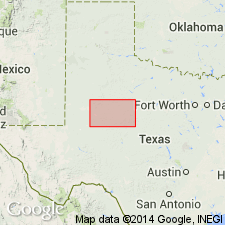
- Usage in publication:
-
- Quartermaster Formation
- Modifications:
-
- Areal extent
- AAPG geologic province:
-
- Permian basin
Summary:
Area of report is central TX; in this area the Quartermaster Formation consists of shale, siltstone, sandstone, gypsum, and dolomite interbedded, mostly various shades of red. The shale is silty, evenly bedded, in beds 2-4 inches thick, locally massive. The siltstone is sandy, red, orangish-red, well indurated. The Sandstone is silty, fine grained, with frosted grains. A few gypsum and dolomite beds 1-4 ft thick present. Maximum thickness 450 ft. Mapped in Coke, Mitchell, Scurry, Fisher, and Kent Cos, TX in Permian basin. Overlies Permian Whitehorse Sandstone, Cloud Chief gypsum, and Blaine Formation (undivided); underlies Triassic Dockum Group. Geologic map. Of Permian age.
Source: GNU records (USGS DDS-6; Denver GNULEX).
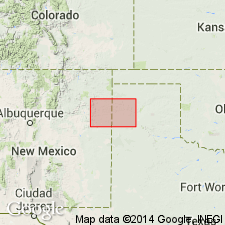
- Usage in publication:
-
- Quartermaster Formation
- Modifications:
-
- Areal extent
- Dominant lithology:
-
- Sandstone
- Shale
- Siltstone
- Dolomite
- AAPG geologic province:
-
- Palo Duro basin
- Amarillo arch
Summary:
Is Permian formation mapped undivided with Cloud Chief Gypsum and Whitehorse Sandstone in two areas along Canadian River drainage in TX Panhandle in this map sheet. Is mapped in northwest Oldham Co, TX (Palo Duro basin) and in vicinity of Tecoyas Creek in western Potter Co, TX (Amarillo arch). Alibates Dolomite [unranked] separately mapped at top. Map unit described as sandstone, sand, siltstone, shale, gypsum, and dolomite interbedded. Sandstone and sand, fine-grained quartz, scattered to locally abundant frosted and polished coarse quartz grains, silty, massive, friable to indurated, various shades of red and orange, orange-brown, and grayish-green. Shale and siltstone, sandy in part, indistinctly bedded to massive, indurated, thin interbeds and veins of satin spar in upper part, various shades of red and orange, reddish-brown and grayish-green. Gypsum, white, gray, and pink.
Source: GNU records (USGS DDS-6; Denver GNULEX).
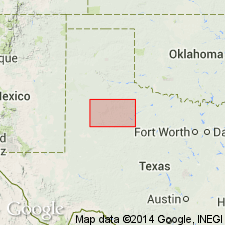
- Usage in publication:
-
- Quartermaster Formation
- Modifications:
-
- Mapped 1:250k
- Dominant lithology:
-
- Shale
- Sandstone
- Gypsum
- Dolomite
- AAPG geologic province:
-
- Palo Duro basin
- Permian basin
Summary:
Is uppermost Permian formation mapped in mostly continuous north-south trending belt below Caprock Escarpment in central part of map sheet in southern Motley Co, TX (Palo Duro basin) and in Dickens, northwest King, southeast Crosby, eastern Garza, and much of Kent Cos, TX (northeastern Permian basin). Overlies Whitehorse Sandstone (Permian); overlain by Dockum Group (Triassic). Map unit described as shale, sandstone, gypsum, and dolomite, interbedded, mostly various shades of red. Shale, silty, abundant interbeds and veins of satinspar, evenly bedded, beds 2 to 4 in thick, locally massive. Sandstone, fine grained, grains frosted, silty. A few gypsum and dolomite beds 1 to 2 ft thick. Thickness 250-350 ft.
Source: GNU records (USGS DDS-6; Denver GNULEX).
For more information, please contact Nancy Stamm, Geologic Names Committee Secretary.
Asterisk (*) indicates published by U.S. Geological Survey authors.
"No current usage" (†) implies that a name has been abandoned or has fallen into disuse. Former usage and, if known, replacement name given in parentheses ( ).
Slash (/) indicates name conflicts with nomenclatural guidelines (CSN, 1933; ACSN, 1961, 1970; NACSN, 1983, 2005, 2021). May be explained within brackets ([ ]).

